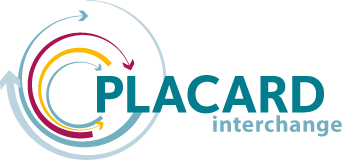Imagine you are sitting in a seminar room in Brussels with a small group of people. Imagine you are closing your eyes and travelling out of your body, out of the room, flying higher and higher until you see the street from above, then the city, the country, Europe and finally the Earth. You are floating in space, looking down at the Earth with its oceans and continents and clouds. Eventually, you decide to fly back to Earth. Approaching it, you realise that it looks different. You can’t find the building you left, so you decide to fly to the building immediately below you.
Above the entrance is a big sign: Museum of Transformation. You enter – there’s nobody there, but all the doors are open. Next to the entrance is a calendar, showing the year 2089.
The paragraphs above introduced a creative writing exercise at our Strategic narratives workshop in Brussels. Over two days, we invited participants to engage in a number of practical exercises in order to learn and share experiences about using narratives as a communication method. The Museum of Transformation focuses on a thought experiment:
You arrive at the Museum of Transformation – it is the year 2089. In small glass vitrines you find four artifacts: a piece of formed glass, a small piece of wood, a metal pincer and a braided ring. Why are these pieces in a museum? What do they stand for? What’s their history, bearing in mind the year is now 2089?
The participants formed small groups: each group was given one of the artifacts and a driver which had an important role in the artifact’s story – either creativity, collaboration, flexibility or empowerment. The groups were then asked to write a story about the artifact.
Read the participant’s stories…
The exercise encouraged participants to take a different perspective by looking through the lens of creativity and imagining a future with few boundaries, outside the common frames of what is plausible, possible and reasonable.
Creative practices have the potential to challenge present barriers and discourses, and could serve as a tool to catalyse sustainable transformations through their ability to open up different possibilities and spaces for dialogue.
A growing number of artists are working on climate change issues through their creative practices. Indeed, art and creative approaches are increasingly recognised for their potential to challenge current thinking on climate change (Gabrys & Yusoff, 2012) and to present new ways of approaching an issue that is scientifically, politically, economically, socially, and culturally complex, unburdened by the weight of disciplinary constraints (Goehler & Prüss, 2012).
“Art and science interactions can liberate one’s thoughts…. By becoming aware of preconceptions that have been conditioning us unconsciously we are able to perceive and to understand the world in a fresh way and could free habitual responses at various levels.” David Bohm, quantum physicist (1996, p. 49)
From this perspective, a stronger interaction between creativity, science and practice has the potential to change habitual responses, possibly into transformative directions towards a more sustainable future.

